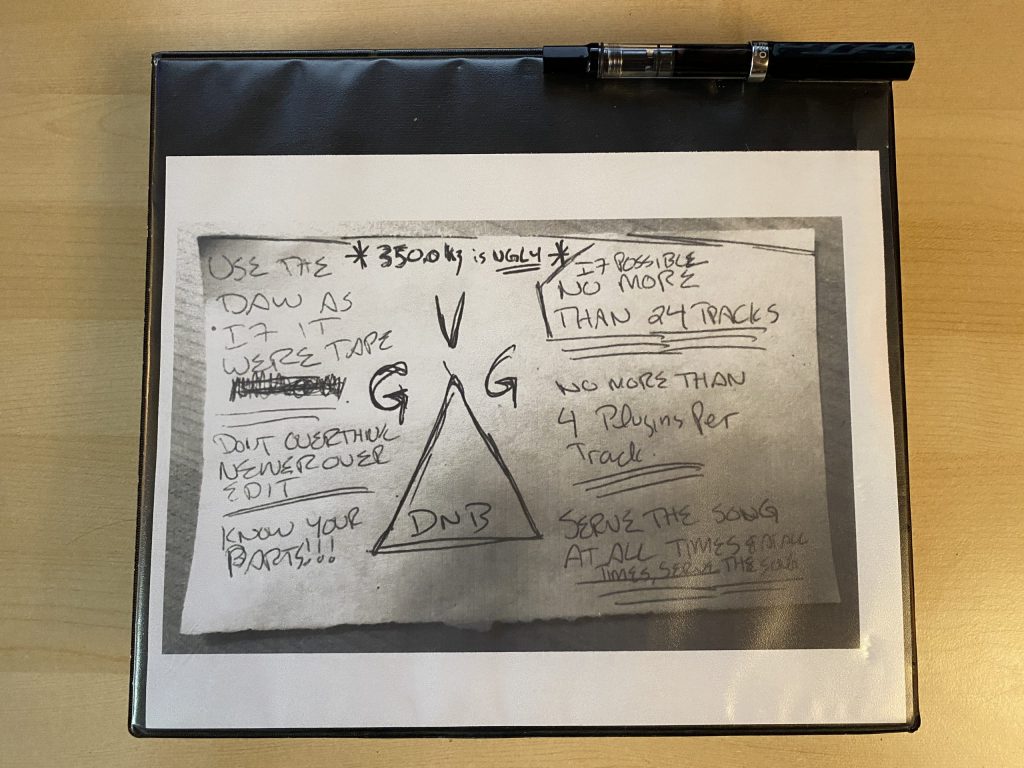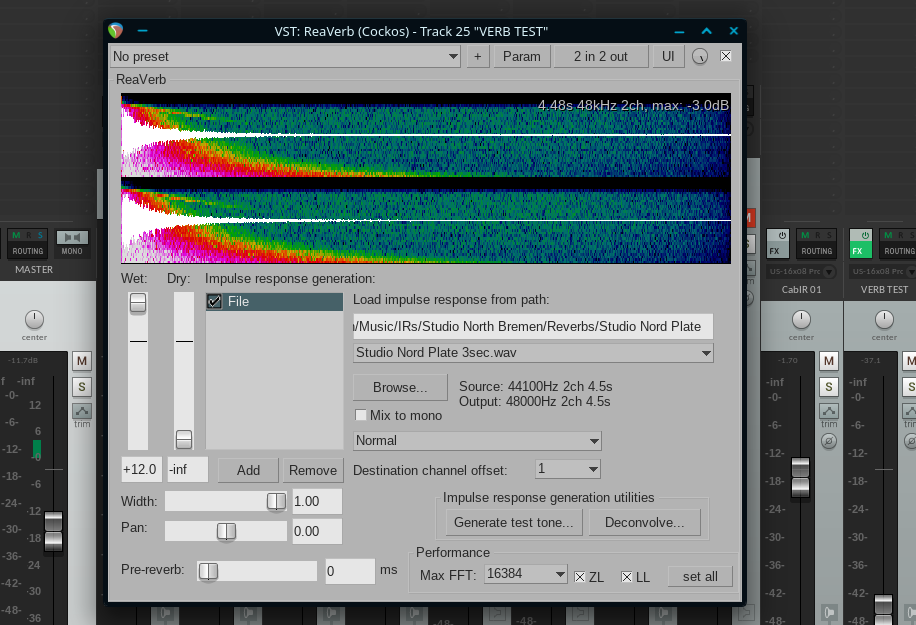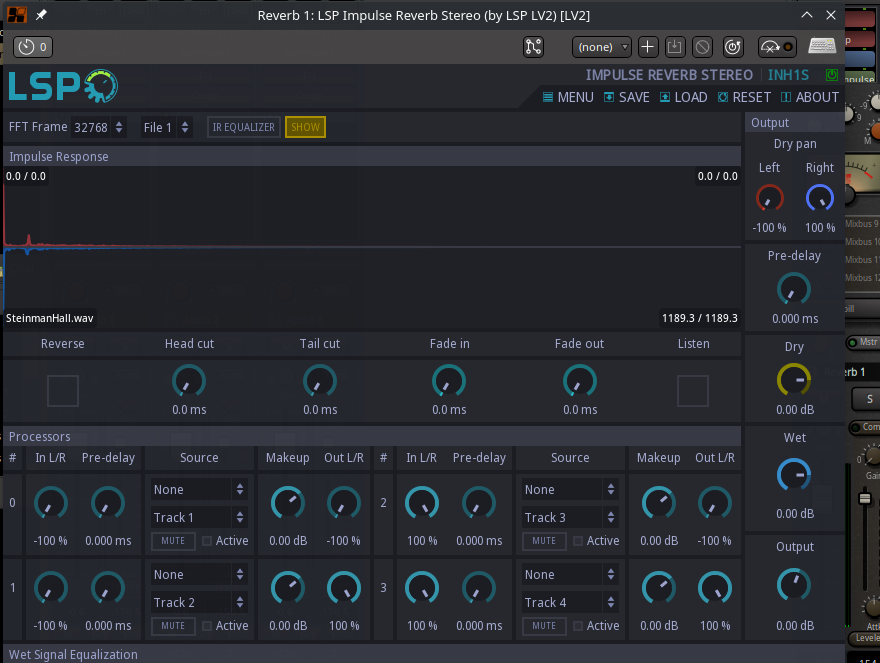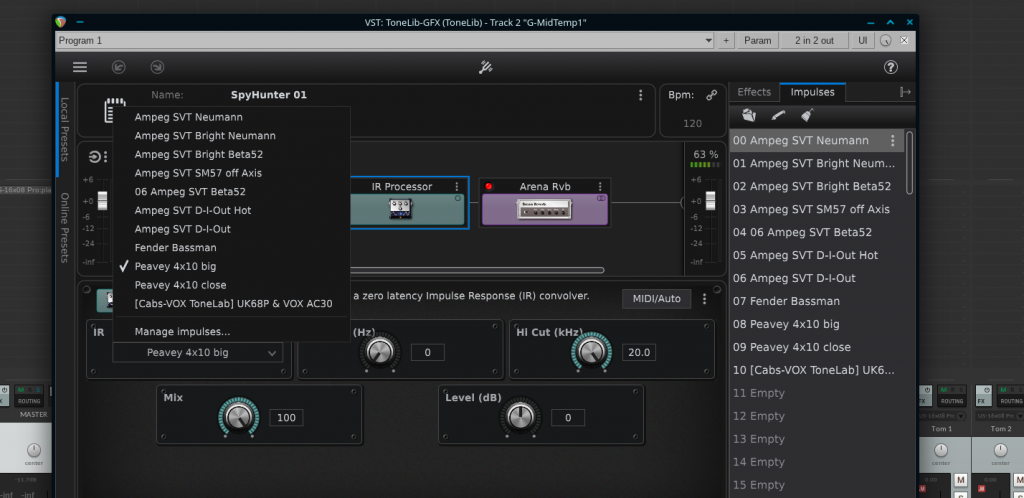A few weeks ago I posted a small bit on Low End Tricks. One of those suggestions was to “Freeze/print tracks that are plugin heavy. In fact, freeze/print any track that has a set and forget plugin.”
I can confirm that this works fantastically.
A few weeks ago I posted a small bit on Low End Tricks. One of those suggestions was to “Freeze/print tracks that are plugin heavy. In fact, freeze/print any track that has a set and forget plugin.”
I can confirm that this works fantastically.
This is a picture of my music project binder:

The cover is a print out of this little note I made for myself in 2019 while I was in the midst of self inflicted mixing crisis. I no longer have the original note (or, rather, I have no idea where it’s hiding) but I still do my best to follow these simple rules when I’m working on a project.
While it’s impossible to adhere to all of these all the time; perfection is the enemy of the good and whatnot, this list has served me well especially working on older equipment.
Remember that less can be more and working with your limitations will always help see you to the end of whatever project you’re working on.
*Updated 10/15/2022 to include Linux Studio Plugins.
When I took a serious interest in recording instruments, I began hearing about something called IR’s and had to dig to find out what they were. I was a late bloomer it seems.
IR stands for Impulse Response. Essentially an IR is a recording of a sound (like a guitar) played though a speaker (cabinet) in a environment (ie: studio live room) through a specific microphone. The final recorded file is just a wav or an aif with wav being much more common.
You load up your IR file into an impulse response loader, which is added to a track that contains a DI guitar and an amp sim of some sort, and the IR mimics the sound of the cab/microphone/room that was recorded.
IR’s are a must have if you’re using straight up amp sims on your guitar tracks. Normally amp sims on their own don’t sound super great; they’re very dry and don’t have a ton of “character”. Stick an IR of, for example, a Fender Tweed Champ 58 on the track and you’ll notice a big difference right away.
IRs can also be used for reverb. Similar to the idea of capturing a sound of specific amp/mics/rooms, reverb impulses capture the ambiance of specific places be it a famous concert hall, the space under a bridge, or even a school hallway.
While there are a ton of IR loaders out there, both paid and free and, as with everything else, a good percentage of them are for Windows and/or Mac.1
Fret not as there are Linux options, and they’re damn good.
Reaper supports IRs via its ReaVerb plugin and is pretty decent. I’ve been testing it out on a piece I’m working on and it seems to handle the job very well, as is pretty much expected from Reaper itself.

There is also the Linux Studio Plugins Impulse Responses and Impulse Reverb plugins. There is a mono and stereo version of each and they offer a little more tweaking capability than ReaVerb. I just started playing with these in Mixbus and so far so good.

The only issue I found with LSP is that it only supports wav. If you manage to find IRs that were created in aif, you’ll need to convert them using something like soundKonverter.
As an alternative to pure IR loaders, ToneLib GFX has an Impulse engine that allows you to add IRs directly into your amp/effects chain.

As for the IR files themselves, I have a pretty sizable IR library thanks to a few free packs:
You can also find both free and paid IR’s just by searching online. The IR files themselves are platform agnostic, so go nuts.
Is using IR’s cheating? No it’s not and don’t let anyone tell you any different.
Of course there are purists out there who think we should only be recording guitars through actual amps in actual good sounding rooms using actual microphones. While most of us would love a room of amps, cabs, and mics at our disposal, it’s important to note that most of us don’t have the money, or the space for that much gear.
For us regular people who want a great sound without breaking the bank, IR’s come in very handy for shaping guitar tones.
1: Have a gander at this list. Lots of good shit, but try and find anything that supports Linux.
Here is thirty seconds of my first, official, render from Linux.
Notes:
All tracks that had plugins, especially guitar tracks with heavy hitters like ToneLib GFX, were frozen/printed to cut back on system resources.
The full song, music wise is finished and recorded. Lyrics were completed this past week and I’ll be laying down vocal tracks over the coming days.
It’s been well over year since I completed When Something Appears so it’s nice to get something done even if it’s just a single song.
Is there a hard and fast rule on what software you need to use? According to big tech, yes. There is only Windows or macOS! There is only Photoshop! There is only Office!
As Big Tech gets bigger and swallows up smaller companies, the landscape for software can seem pretty one dimensional and expensive unless you’re willing to do some digging and be skeptical about how you procure these products.
I’m already a little off the beaten path with software mainly because I loath the subscription model when it comes to applications. I don’t mind subscriptions for services such as music/video streaming or online storage; I subscribe to Spotify and Netflix (the originals!). I also have online storage and password manager accounts.
For apps though, I just don’t agree with the subscription model. I like to pay for an app and be done. Some subscriptions are kind of ok; Microsoft 365 is good because you get Mail (sans advertising), all the Office apps, and a terabyte of OneDrive 1 storage for a decent yearly price so you’re getting a full package of stuff. Some are meh (Adobe), and some are downright awful (I’m looking straight at you, Pro Tools).
The bright side to all of this is that you can still buy apps that are just as good, or often times better than the flagships.
There has been some ballyhoo of late over the EU’s regulatory decision to force phone hardware companies to use strictly USB-C connectors for charging.
The quick and dirty is that the EU wants to force hardware manufacturers to make charging ports on all phones, tablets, cameras, headphones, portable speakers, and handheld video game consoles USB-C.
Uh-oh. Sounds like they’re trying to stamp out innovation, kill competition, and shut down Christmas all at the same time.
When recording and/or mixing music on lower end or older computers, the following tricks are important:
I’m going to add a little more to my post from last week. Yes, yes I’ve whinged and kvetched about computers here many times but I’ve been rethinking my relationship with technology quite a lot over the past few weeks.
Up until the past year or so, I’ve been what you would call a die hard Mac user and had been since around 2007. Apple was my jam. The house is filled with MacBooks, iPhones, iPads, Apple TV’s, Apple Watches, and HomePod mini’s.1
I still have two Macs but one is at deaths door and the other is so slow it’s been relegated to being a lowly media server. In the meantime, I’d been researching new machines and using my work computer, a Dell XPS running Windows 11, as a stopgap – and we all know that using your work computer for personal shit is never a good idea.
While I’m somewhat interested in MacBooks, I’m no longer the fanatic I once was. Apple made some design and pricing decisions over the past few years that soured my taste. Touchbars, USB-C, shitty keyboards, $500 wheels, $1200 monitor stands … you get the picture. Some of their recent designs are good (well the MacBook Pros anyway), and the Apple Silicon chips are interesting. Yet while I was considering saving and getting a MBP, in the end I simply could no longer justify the prices Apple is asking for their computers. So instead of spending a small fortune on a new MacBook Pro, I started looking at the PC market.
After years of deriding Microsoft, I was pleasantly surprised to find that Windows is actually really good now. Especially Windows 11. Sure, there’s cruft, legacy garbage, and weird design decisions hanging out in the background, but there is cruft, legacy garbage, and weird design decisions hanging out in the background of any operating system.
The work Dell I’ve been using would be a really nice computer if it wasn’t so prone to hardware issues. At the beginning of of the year I had to run the gauntlet with Dell Support. Three motherboard replacements later and currently the trackpad doesn’t work if the laptop is plugged into power – and this is a $2500+ laptop.
I also am partial to Lenovo ThinkPads but one of those would also run me a couple of thousand dollars.
And then I got to thinking: do I really need to part with that much money just to get a computer, any computer, that can handle basic music production and light video editing?
“Marketing, marketing, marketing. Everything is Better! Faster! Thinner! Lighter! New new new! Forget about what was out just a few months ago! Check out what we have right now! It’s better!”
– Every Tech Company That Exists.
So I started looking at the second hand and refurbished market.
Here is what I found:
So count me in. Here I am on my refurbished HP laptop and everything is going just fine.
1: I’m severely disappointed with the HomePod mini’s.
Pros:
Cons:
This is primarily for Mixbus and Mixbus32c running on Linux. It also applies to Ardour, which Mixbus is based on. The distro I’m using is Fedora Jam, however this most likely applies to whatever distro you’re using.
Mixbus 32c shows the following message when launched:
| WARNING: Your system has a limit for maximum amount of locked memory. This might cause Mixbus32C to run out of memory before your system runs out of memory. You can view the memory limit with ‘ulimit -l’, and it is normally controlled by /etc/security/limits.conf |
Open a Terminal window and check the memory limit by typing ulimit -l . You may see something like this:
| $ ulimit -l 8192 |
This means that Mixbus is limited to 8GB of memory. To open this limit up, in Terminal, edit limits.conf:
| $ sudo vi /etc/security/limits.conf |
Add the following lines (or if they already exist with a # in front of it remove the # and change the number value of memlock to unlimited):
| @audio – rtprio 95 @audio – memlock unlimited |
Save the file and check the ulimit again. You should see this:
| $ ulimit -l $ unlimited |
If you don’t see this, then restart. You can try logging out and back in, but I found this didn’t work. A full restart, for whatever reason did.
Launch Mixbus. If you see the same warning message, check your group in Terminal:
| $ groups yourusername |
If you don’t see the audio group listed, for example:
| username : username wheel pkg-build |
add your user to the audio group:
| $ sudo usermod -a -G audio yourusername |
Check groups again. You should see audio listed:
| $ groups yourusername username : username wheel audio pkg-build |
Launch Mixbus and the message should be gone.
After all my posts opining about Apple, macOS, Dell, and Windows, I’ve thrown my hands in the air and given up looking at new computer hardware. I have a ton of reasons which I’ll write about, but the main one is that I’ve become dismayed thinking about the amount of second hand computers that exist while companies churn out new product for ridiculous prices. As a friend of mine recently said: “I like the idea that Apple is making high performance chips that are low on power consumption but I can’t, and won’t spend that much money on a computer.”
After looking into the second hand market, I headed to a local, mom and pop refurbished computer store and marveled at the WALL OF LAPTOPS they had on display:

These are all second hand/refurbished. And they have more than these stored away in the back. They have old old computers, not so old computers, and newish computers. Give them an idea of what you’re looking for and they’ll hook you up. Why would anyone buy something brand new? Performance? The ability to run whatever is shiny and new?
Well …
I ended up purchasing a refurbished HP EliteBook 850 G3. The model is around six years old and came with an i7 6600u, 16GB of memory (which I upgraded to 32GB thank to an extra stick of ram I had lying around) and a 512 SSD. Supposedly the CPU is not Windows 11 supported but who cares?
In another twist, I decided to flatten the hard drive and give Linux a run for its money.
After doing some research, I settled on Fedora Jam as it’s geared towards music production and so far so good.
I’ve got my Tascam US16x08 running using ALSA – which came with Fedora Jam and needed no configuration – and it all works with Mixbus32c. I have to say that, so far, Mixbus runs so goddamned smooth on Linux, which makes sense considering it’s based on Ardour.
My usual go-to and longtime favorite DAW is Reaper, and it turns out they have a Linux build. I managed to get it installed and running but, at first, it would not pick up the Tascam. I kept at it over the past few days and now it seems to be running just fine – although under JACK rather than ALSA. I mean ¯\_(ツ)_/¯
Music aside, I’ve managed to set it up Fedora as a full-on desktop environment running KDE Plasma and with all my usual apps (Firefox, Spotify, FocusWriter) as well as a good number of Open Source alternatives. The most pleasing surprise is a video editor called Kdenlive. it’s got just the right amount of features that I used in DaVinci Resolve and Premier Pro to make it just right without excessive bloat.
I’m also loving how well a new release of Linux runs on six year old hardware. When I first brought the laptop home, and before I nuked the drive, I gave the Windows 10 install a spin and it was a little sluggish. Fedora, on the other hand, is running like a dream.
Linux has come a long, long way since I seriously tired it last. I know it will never overtake Windows or macOS – I mean, it’s been poised to take over for as long as I can remember – but wow, it’s so much better than I remember.
So far so good.